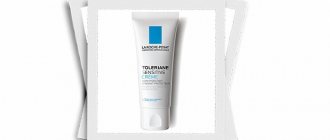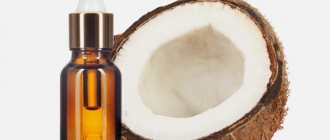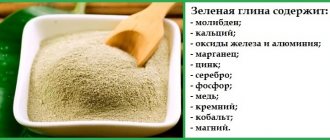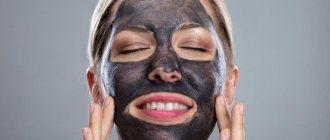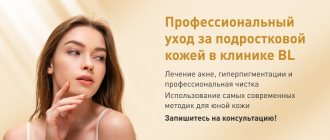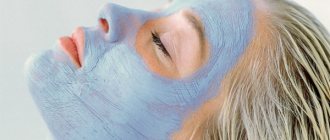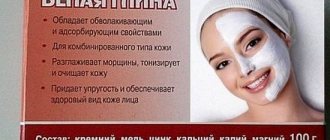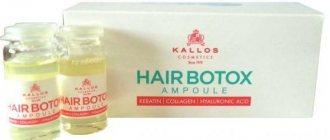Cosmetic clay as a cosmetic product has been known to the world for quite a long time. It is known to have antibacterial, anti-inflammatory and detox properties. In this article we will tell you about cosmetic clay: how to use, basic properties, composition, and so on.
On the shelves of ordinary stores it is very easy to find cosmetic clay of any color, either as a mono product or as one of the components in cosmetics. Depending on the color of the clay, its properties differ, but we will talk about this below.
Special composition of cosmetic clay
Despite the fact that the clay varies in color, the composition is practically the same. Here's what you can find:
- The most important substance is silicon oxide. It can restore injured blood vessels, improve collagen production and stimulate the regeneration process;
- Aluminum - dries out the skin (an excellent product for those with oily or combination skin types). Green, white and red clays contain the most of it;
- Manganese - it is thanks to it that clay works as an antiseptic;
- Magnesium - helps start the process of skin regeneration and rejuvenation;
- Copper - thanks to it, the production of keratin is stimulated, which is very important for rejuvenation and “glow”. It also protects the skin from the harmful effects of the environment;
- Zinc – protection against various harmful bacteria and cell rejuvenation;
- Other components - iron, phosphorus, nitrogen and others nourish the skin with important substances.
The effects of clay on the skin
Clay, depending on its chemical composition, has different effects on human skin. All types of clays share the same mechanisms of action on the skin.
Clay is a natural adsorbent ; it draws metabolic products from the skin.
Clay in its pure form provides skin cells with essential elements in a balanced amount. Regular use of masks brings cell vibrations back to normal. The high affinity of clay and cell membranes means that its components easily penetrate skin cells and provide cells with adequate nutrition and oxygenation. It also evens out the skin well, removes redness, various types of peeling, rashes and pimples.
How to use cosmetic clay: let's talk about the properties
Clay has a lot of important advantages, unique and inimitable. Namely:
- Cleansing - it penetrates deep into the skin through the pores, removes excess sebum (sebum), impurities and dust;
- Regulation - the activity of the sebaceous glands decreases, the production of sebum is normalized;
- Moisturizing - the skin after clay masks is velvety, even and smooth. Important: you should not let the clay dry out on your face (lighten and harden), otherwise, instead of moisturizing and nourishing, it will draw all the moisture from the skin. There is a solution: either spray your face with tonic periodically, or apply a very thick layer);
- Calming effect - relieves inflammation, eliminates irritation. Provided that you are not allergic to the components of the composition;
- The most important thing is the absence of age and other restrictions. It doesn't matter what skin type you have or how old you are. From adolescence to old age, you can safely use cosmetic clay for the face and body.
Washing the lacunae of the palatine tonsils
Recommended by doctors for chronic tonsillitis, including for the prevention of exacerbations of the disease. It can be carried out with a syringe with a special attachment - a cannula or using a vacuum method.
The palatine tonsils are accumulations of lymphoid tissue in the pharynx; their important anatomical feature is the crypts. Crypts are branching depressions in the tonsils, due to which the area of contact of lymphoid tissue with infectious agents increases and, as a result, the immune response is carried out faster.
Tonsilloliths also form in the crypts - caseous plugs, which are dense formations consisting of desquamated epithelium and food debris. Usually the plugs are small and come out on their own; this process goes unnoticed by humans. In some cases, plugs linger in the crypts, and when bacteria and leukocytes join them, they increase in size and become denser. The presence of tonsillitis is associated with a feeling of discomfort in the throat, sore throat, reflex cough, and very rarely, only in 3% of cases, halitosis (bad breath). Among the normal microflora of crypts, anaerobes stand out separately, producing volatile sulfur compounds; it is because of them that the cork acquires a characteristic unpleasant odor.
It is believed that caseous plugs do not have a negative impact on health, which means they do not pose a danger. Only in Russia and the post-Soviet space is the detection of traffic jams associated with the presence of chronic tonsillitis. In other countries, this disease is classified as persistent inflammation and swelling in the throat, accompanied by pain, in some cases requiring systemic antibacterial therapy.
In our country, doctors usually recommend a course of rinsing, consisting of 5 procedures, which are carried out every other day or less often. This approach is not based on evidence of effectiveness, but on the preferences of a particular specialist, “his personal experience” and the desire of the patient. A wide variety of washing solutions are used - from furatsilin to systemic antibiotics and bacteriophages.
Foreign doctors offer patients to remove plugs themselves in a variety of ways. It has not been proven that a course of washing the tonsils reduces the incidence of tonsillitis. If caseous plugs cause a person significant discomfort, or he or she is bothered by bad breath, it is suggested that you discuss the possibility of tonsillectomy (tonsil removal) with your doctor. Sometimes, unfortunately, this is the only way to get rid of traffic jams. A one-time rinsing of the tonsils is allowed to remove tonsillitis (not during an exacerbation of chronic tonsillitis!), if they cause severe discomfort, including psychological, and the patient is unable to do this on his own.
The therapeutic effect of washing the palatine tonsils in the prevention of exacerbations of chronic tonsillitis has not been proven. There are also no clear recommendations determining the number of procedures.
It is important to know : washing the lacunae of the tonsils is not a therapeutic or preventive procedure.
Cosmetic clay: sorted by color
As described above, clay varies greatly in color, slightly in properties and composition. There are several colors: white, blue, yellow, green, red and black. Let's start in order:
- White clay or kaolin: whitening and smoothing out unevenness. The most easily accessible and famous. White cosmetic clay will help with almost all skin problems: acne, flaking, redness, inflammation, and so on. It is easy to find in many formulations of skin and body care cosmetics. After using white cosmetic clay, sebum production is reduced, excess oily shine is removed, acne dries out and facial wrinkles are smoothed out. Moreover, kaolin can be used as a scrub or peel if you want to gently and gently remove dead skin cells;
- Blue clay: healing and drying. No less popular than white and is considered top due to the presence of many vitamins, minerals and microelements. Especially cadmium and cobalt. It is recommended for those with oily and combination skin types to use blue cosmetic clay for the face - acne and blackheads disappear over time. The complexion is refreshed, the skin becomes smooth, clean and radiant. A big bonus is the stimulation of blood circulation, which helps fight cellulite, stretch marks and inflammation;
- Yellow clay: freshness and tone. It contains sodium and sulfur, so it is perfect for dull and “sad” skin of the face or body - it’s a good oxygen shock. The effect is cumulative, but the first results will be visible after just a few uses - the skin will brighten, glow, look healthy and rested. If you have areas on your body with rough or dead skin (elbows, heels), you can apply yellow clay to them to soften, moisturize and exfoliate. It is also an excellent remedy for regulating foot sweating and eliminating unpleasant odor. You can make foot masks to exfoliate the skin on the heels, remove the stratum corneum and unpleasant odor;
- Green clay: relaxation and calm. The composition includes copper and iron oxide - hence the color. These components help stimulate blood circulation, which leads to a pleasant glow on the skin and gradual rejuvenation. Green cosmetic is recommended for use if you have dermatitis or oily skin (in the first case, be sure to consult your doctor!). It's great to take baths with green clay before bed - very relaxing and calming;
- Red clay: warming and healing. It has this color due to a lot of copper, potassium and iron oxide. The skin is very well saturated with oxygen, blood circulation improves. As a result, the elasticity and firmness of the skin increases. Red clay warms up the skin, so it is good to use red cosmetic clay in the cold season to avoid chapping and dehydration. For dry, sensitive or dehydrated skin, red clay is a real gift. Redness, itching, peeling and dryness disappear in a short period of time if masks are used regularly;
- Black clay: cleansing and protection. In its composition you can find magnesium, manganese, quartz, iron and many, many other benefits. Many of them perfectly cleanse the skin and remove dirt and toxins from it. In addition to them, the use of black cosmetic clay helps smooth cellulite and reduce fat. In many salons and beauty parlors, it is used as an anti-cellulite agent for body wraps, massages and other manipulations to reduce centimeters in girth in various places. In addition to all of the above, subcutaneous and intracellular metabolic processes are accelerated. As a result, the skin is not only nourished and moisturized, but also protected from the harmful effects of the environment.
Unexpected diagnosis: frost allergy
How do people react to cold? Strange question, you say. They shudder, feel cold, may feel goosebumps and even tremble. But for some people, even warm clothes can't save them from red itchy rashes, blisters, and even fever and aching joints! This is what an allergy to cold looks like.
There are no exact statistics on frost allergies. It is known that it appears most often between the ages of 14 and 30, and about 70% of those suffering from it are women. The reaction occurs when the thermometer drops to +4°C and below. In humid air and strong winds, the manifestations are more acute, since the cold is felt more acutely.
I can't tell if the red rash that appears on my skin in winter is a frost allergy or a sign of another problem. Is it possible to determine accurately?
The most affected areas of the body are the nose, earlobes, face, hands. But rashes can also appear under clothing if the person is cold enough. The classic hives appear first—a red rash with swelling, blisters, and itching. Then it may be accompanied by white and pink rashes. If cooling continues, systemic reactions of the body may begin - chills, fever, headache. There is even an increase in temperature and aching in the joints. The most dangerous reaction is Quincke's edema. The eyelids, lips, mucous membranes of the mouth and respiratory tract swell. The throat begins to feel sore and cough, and breathing may be impaired.
Of course, all these symptoms can be associated with other reasons. To make sure that cold air is to blame, they do a “frost test.” Place a piece of ice on the back of your hand and hold it for 2-5 minutes. If some time after removal a swelling and rash appears in this area, this is a sign of an allergy. Some tests can effectively help distinguish frost allergies from other conditions.
I have never had an allergy to cold before. Blisters on the skin, which I scratch until it hurts, began to appear after I was 25 years old. What explains the appearance of these itchy spots?
Primary cold allergy occurs on its own; its causes have not been precisely established. There is evidence that within 10 years after the first attack, the reaction to cold disappears on its own in about 25% of people.
There is a so-called secondary allergy to cold, which occurs as a result of other diseases. For example, after a person, especially a child, has had chickenpox, pneumonia, or infectious mononucleosis. It also develops against the background of chronic diseases, especially immune disorders, diseases of the liver and gastrointestinal tract, and helminthiases.
Although medicine is not sure of the causes of primary cold allergies, the mechanism of the reaction is quite clear. Under the influence of cold - no matter from the air, water or from some surface - special immune compounds called cryoglobulins are intensively produced in the blood vessels of the skin. They give such a skin reaction.
On the one hand, the strategy for dealing with allergies to cold seems to be clear: dress warmly, spend less time in the cold, do not swim in cold water, etc. But sometimes circumstances are stronger than us, and going out into the cold and starting to suffocate from Quincke’s edema is not the best outcome. Plus, as already mentioned, a reaction to cold can be a manifestation of serious internal diseases. Finally, cold reaction can easily be confused with Raynaud's disease. In her case, a person reacts to cold in a similar way, but not due to the production of cryoglobulins, but due to paroxysmal spasms of small blood vessels. It leads to ulcers and tissue necrosis.
Therefore, it is better to consult an allergist, conduct a diagnosis and get recommendations for relieving the acute condition.
I'm going to see an allergist. What tests should be prepared in advance?
Indeed, to save time, you can conduct research on some blood parameters even before visiting a doctor and come to him with ready-made results.
You can choose either a biochemical liver test or a liver examination, since half of the tests are the same.
A basic biochemical blood test will allow you to assess the general condition of the liver and the risk of vascular atherosclerosis. Based on this, it will immediately become clear whether a primary allergy to frost can be assumed, or whether this reaction is clearly a consequence of some kind of disease. It is advisable to donate in the first half of the day; before blood collection, do not eat for 8-14 hours; you can only drink regular still water.
Liver examination, basic - a set of tests that allows you to assess the condition of liver cells and its functioning. It is usually prescribed for increased fatigue and the presence of heaviness or pain in the right hypochondrium. If there is a reaction to cold, it will allow you to determine whether the allergy is a consequence of toxic, viral or other liver damage. It is given in the same way as a biochemical blood test.
Cryoglobulins are a study that will detect the very immune complexes with which the body responds to frost. It is better to check them, since their presence in croquis is accompanied by kidney damage. They may also indicate viral hepatitis and some other diseases. The test is taken in the morning after an 8-hour fast; you can drink plain water without restrictions.
If there is a suspicion of Raynaud's syndrome, often associated with rheumatic diseases, it is necessary to undergo a rheumatological advanced set of laboratory tests.
Speed up your diagnosis and rule out serious illnesses by getting all your tests done in one go at a conveniently located laboratory office.
Cosmetic clay: how to use for face and body
Making a clay mask couldn't be easier! You just need to mix the clay with water and you're done. You can mix the powder with anything:
- Warm water;
- Mineral water;
- Milk or cream;
- Green or black tea;
- A decoction of herbs and so on.
It is better to use glassware or, in extreme cases, plastic. It is better to avoid metal clay, since clay loses many important and useful substances in it. The consistency should be like sour cream (20-25%), such a density is very convenient to apply to the skin - it does not flow or drip.
Clay, due to its healing properties[1], has been widely used in skin care for a long time.
As studies show[2], the use of certain types of clay helps eliminate excess sebum, cleanse and refresh the skin, and also promotes the healing of pimples[3]. However, there are still several myths surrounding clay masks. We'll look at three of the most common mistakes and give tips on how to get the most out of your mask.
Cosmetic clay: how to use
Despite the simplicity of “preparing” a clay mask, for maximum effectiveness it is better to follow a certain algorithm of actions:
- Cleanse the skin of cosmetic residues with foam or another similar product;
- Treat with scrub or peeling (only gently so as not to injure the skin);
- Even better is to steam the skin for about 15 minutes. The better the cleansing, the brighter the effect of the mask will be;
- Dilute the powder with the liquid to the consistency of sour cream;
- Stir thoroughly, there should be no lumps or air bubbles;
- Apply the mixture to the skin in an even layer;
- Leave for about 15 minutes, but do not let the clay dry out! Spray your face with tonic or plain warm water from time to time;
- After the time has passed, rinse off the mask with warm water and pat your face dry with a paper towel;
- Apply a light moisturizer to seal the result.
Now you know how to use cosmetic clay for your face and body. This is a great beauty product because it is easy to find, cheap and very effective. Several colors can be mixed with each other and they will retain their benefits! The effect is cumulative, make masks from cosmetic clay several times a week and the results will not be long in coming!
“Cuckoo” or nasal lavage using the Proetz fluid movement method
A method developed by American otorhinolaryngologist Arthur Proetz more than a century ago. For many years it was used by ENT doctors to treat acute diseases of the nose and paranasal sinuses.
Russian ENT doctors prescribe “cuckoo” for almost any patient complaint, from acute rhinitis and sinusitis to acute adenoiditis and eustachitis. Washing technique: the patient lies on his back (less often sits), an antiseptic solution is pumped into one half of the nose, and removed from the other using suction. During the procedure, he is asked to pronounce the word “cuckoo” to reduce the likelihood of the solution getting into the throat and larynx (this causes the soft palate to rise, closing the nasopharynx). However, there is still a high risk of liquid entering the respiratory tract, especially in children who do not always understand what is required of them and behave restlessly.
Due to the creation of negative pressure in the nasal cavity, “cuckoo” can be traumatic for the inflamed mucous membrane of the nasal cavity, and if there is severe swelling in the nose and nasopharynx, it can be painful for the ears.
The use of “complex compounds” for rinsing is less preferable than saline solution. Antiseptics can additionally dry out the inflamed mucous membrane of the nasal cavity. Adding antibiotics to the solution also does not provide a therapeutic effect (in “cuckoo” it is often the reserve antibiotic dioxidine; its side effects are dangerous: experimental studies have shown that it has a mutagenic and damaging effect on the adrenal cortex). The addition of hormonal drugs such as dexamethasone or hydrocortisone is also not justified - there are more suitable hormones for use in the nasal cavity (mometasone, fluticasone, budesonide, etc.). If indicated, these sprays can be successfully used; however, they have low bioavailability, that is, they act only in the nose, without having a systemic effect on the body and without significant side effects.
It has been proven that nasal rinsing with positive pressure (Dolphin balloon, Neti pot) is more effective. Such rinses are especially effective for allergic rhinitis and chronic sinusitis.
Important to know : in acute bacterial sinusitis, it makes sense to discuss the use of oral antibiotics only. Neither topical antibiotics nor local antiseptics are indicated, even as an adjunct to treatment.
Ingredients
It is necessary to purchase the base for masks without impurities and fragrances. Clay can be bought in pharmacies and at any cosmetic store near your home.
Ingredients of the mask with white clay and honey:
- clay - 2 tbsp;
- honey - 1 tbsp;
- warm milk - 3 tbsp.
Before use, be sure to check if you are allergic to honey. Apply a small amount to the outside of the brush.
